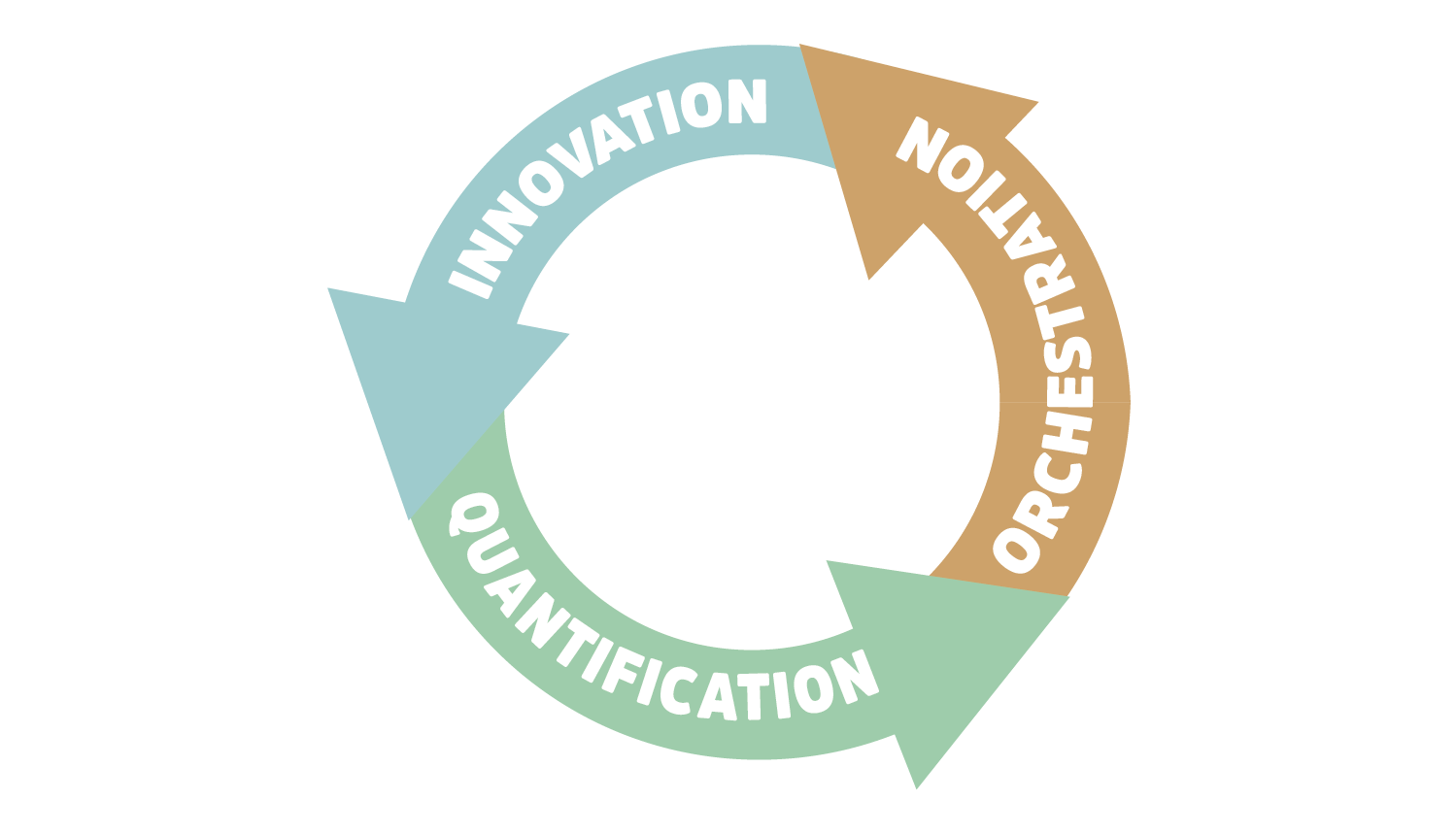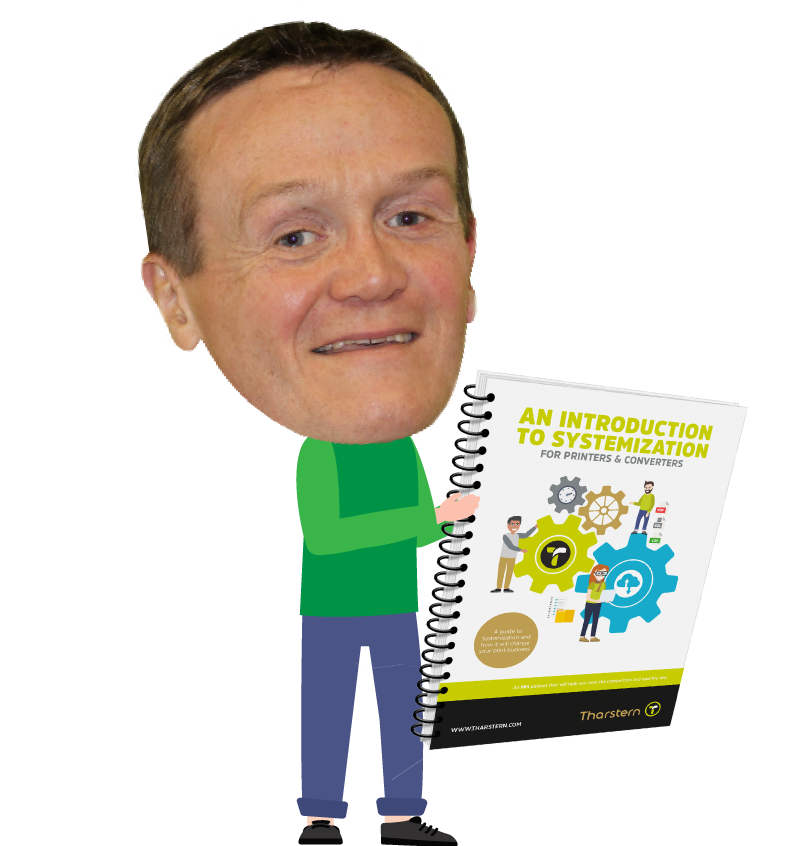Systemizing your print business part 4 – How to continuously improve
So your System is in place and everyone in the company has a job description and Processes for how to carry out their job in a way that fits in with the corporate Vision and Mission. Great work! But you’re not done yet. Systemization is a long-term project without an end, and you must now work on the continuous refinement of your Policies, Procedures and Processes, and experiment with new ways to improve each of them.

So how do you do this? According to Michael Gerber in ‘E-Myth Revisited’, continuous improvement of your System happens through a cycle of "Innovation, Quantification, and Orchestration."

Let’s look at these steps in more detail:
Step one

Innovation is about finding a better way to do things, like creating a new Policy, Process or Procedure, or improving an existing one. It’s doesn’t necessarily need to be the ‘best’ way, but thinking about what the best way is, will help you create a ‘better’ way. That’s powerful enough in itself.
emyth.com have a great 6 step process to tackle this innovation:
- Identify a frustration that you or others are consistently encountering and write it down.
- If your frustration is focused on a person, then you need to restate it as a Systems-directed problem. Problems generally aren’t caused by people, they’re caused by either a broken System or a lack of one.
- You then need to identify the underlying root cause of the frustration, so consider things like who is involved, how often does it occur, what does it cost and what are some specific examples.
- Determine the impact of the frustration and decide whether it’s a low, medium or high priority. Anything low or medium priority can be pushed back until all high priority issues are covered.
- Identify the missing or broken areas of your System that have caused the issue. Use this structure to translate your frustration - “The real problem is the absence of a [name of Policy, Process or Procedure] that will [specify the desired results]”.
- Finally you can design, test and implement a new Process by outlining accountability, main steps, necessary forms/documents and when it will be implemented.
Step two

Quantification is key because it helps you work out if your Policies, Processes and Procedures are successful or if you need to make any changes. Here’s how you will go about Quantifying your System…
- Identify which business activities relate to this new Policy, Process or Procedure, the original frustration behind it and the results that need to be quantified.
- Create an automated System for collecting data.
- Now create a baseline for your metrics so you can compare results and see if they’ve been successful.
- Use your baseline data to create a management report template for reporting on the effectiveness of future innovation experiments. This report should include a comparison between the most recent results and the baseline.
- Make sure to continuously review and improve the report. Don’t let it stagnate and become irrelevant or unused.
Step three

Orchestration is all about documenting, implementing and delivering training on your System. You’ll be regularly communicating with your employees to drive this new System, so it’s important to constantly reinforce the company Vision and how this System is going to help deliver it.
To learn the best way of sharing the System with the rest of your company, check out our new eBook.
What are System Busters?
In his book ‘Systems Busters: How to Stop Them in Your Business’ Philip Paul Beyer describes a System Buster as “Any event that causes chaos in – or ‘busts’ our System of operation”. In the ISO 9001 world of quality assurance, they are called ‘Non-Conformances’, but they are essentially the same.
Beyer explains there are two different types of System Busters:
- Personal Error – where a person fails to adhere to the System.
- System Error – where a new event occurs that has never occurred before, and so is not dealt with by the System.

How do I stop them in my business?
Whatever kind of System Buster, it must be reported, so you can investigate and fix the System. If you operated to ISO9001 you would do this by creating a Non-Conformance Report, which includes:
- The Problem Statement – who, what, why, where, when.
- The Policy, Procedure or Process that was not conformed to.
- An investigation of the problem, repeatedly asking ‘why?’ until you reach the core issue.
- The solution – how this will be fixed and monitored.
Beyer adopts a similar approach using an online form he calls the ‘System Buster’ form. The person who catches the System Buster submits the form to management detailing as much information as they can, then it’s over to management to investigate the issue, identify if it was a personal or System error, and decide how to fix it.
For Systems issues, the resolution is an amendment to the System, which is simple enough. For Personal Errors, it gets a little more complicated. This is where you need to speak to the person responsible for the non-conformance and restate your vision for the System and what you are trying to achieve, in an attempt to get them on board and enthused about it.
In the final article of the series, we’re going to show you how to digitize your Systems using software technology.
Share this
You May Also Like
These Related Stories

Systemize your print business Part 5–Digitize with software technology

Systemizing your print business part 1 - An introduction to Systemization


